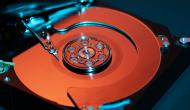Can a Mere Tech Journalist Configure and Use The QNAP TS-877 NAS
Being a mere journalist with not much experience in setting up office networks, finding out that I would be setting up and reviewing the QNAP TS-877 gave me an expresso jolt like never before. It had me thinking if I made the right choice waking up that morning. Alas, the daunting task lay in a box in front of me as I stood at my desk. No going back to bed at this point.
In some ways this was Murphey’s law, I spend my time writing about tech and making my opinions known and now my publisher was asking me to do a hands-on job and become the IT manager for a day. Something I have never had experience of before.
While the TS-877 is not an enterprise-class array, it is also not a home NAS, it’s a serious piece of equipment that can power large applications and large companies. Our own office with just 15 people, actually use a smaller QNAP NAS for the whole team. And as soon as you look at the TS-877 next to our small two-bay NAS, you realise this has been designed to power a much bigger operation than our own.
.jpg)
With this in mind, I bit the bullet and opened the box. For a moment I thought I was “off the hook”. No manual to be seen. Surely a serious piece of hardware like this would require a manual the size of yellow pages? If there was no manual to study then how could I proceed? It turns out that things these days are a little different. Once I “plugged in the beast” I discovered that QNAP have really streamlined the way you can educate yourself, set up guides are online and much of the instruction needed is available on screen with pop up help boxes at each stage of the setup. My confidence started to build that I just might get this done.
I was really surprised at how QNAP’s intuitive interface made this fairly technical setup appear so easy. Once the QNAP was powered up, I simply went to my network on my lap top, installed the QNAP “finder” software and it immediately discovered the TS-877 for me. Once connected I was prompted to set up as an admin.
The QNAP model we were provided for this review had 4 Hard drives, but they had not yet been formatted with a filesystem (not something I have ever had to do) but getting them configured was easy. QNAP allows you to create a storage pool and configure volumes which span across physical hard drives. I was not sure exactly how this worked, but the step by step configuration not only makes it easy to do, but they even explain the concepts so that I was able to learn what these terms meant as I went through the setup process.
I was able to put all four internal drives into a single storage pool, then create a volume within that pool. I was given lots of options for how to set up the RAID and decided to try and implement a RAID 5 setup, even setting aside one of the physical drives in the pool as a hot spare. Believe me when I tell you, before I started this process, I really would not have believed that a humble “hack” like myself could so easily configure an enterprise-class disk setup. Imagine my delight when I found it to be both stress and hassle-free and within 30 minutes, I managed to setup a business class NAS available on the network, with RAID 5, hot spare and even space set aside for snapshots. I was seriously wondering whether I had a new career in front of me as a storage admin?
The TS-877 I was using, as mentioned earlier, had 4 hard drives installed, but from the configuration screen, I could see that its possible to also install SSD and configure the device so that premium workloads use the premium storage. Essentially the TS-877 can operate as hybrid flash NAS for serious data-intensive workloads.
There are a host of applications that come with all QNAP NAS devices. In addition to the management software, there are also many other softwares that are ready to install, such as CCTV, Video Players, Web Servers, the list goes on. I got brave and decided to install one of the apps already in the admin panel. The application is called “Notes Station”. Once installed it runs just like Evernote or Microsoft note, giving users that you define, full access just like a cloud-based app. The big difference is that you have complete control over the usage and administration which is a real bonus for private data and projects.
Below are the specifications and capabilities offered with this model.
The unit is the first Ryzen-based NAS with up to 8 cores and 16 threads and graphics card support to redefine your virtualisation and 4K processing experiences. It is powered by AMD’s new 14nm Ryzen processor that redefines the high-end desktop business NAS for greater video and virtual machine performance with up to 8 cores/16 threads native processing and Turbo Core up to 3.7 GHz. The hardware is also integrated with multitasking software to easily manage resource-demanding applications and tasks.
This TS-877 also provides two 2.5-inch SSD slots dedicated for caching to increase IOPS performance, and supports optional M.2 SATA 6Gb/s SSDs. Using an SSD cache boosts overall system performance, it helps to improve the overall workflow of random IOPS demanding applications such as virtualization. The Qtier Technology allows the TS-877 auto-tiering that further helps continuously optimise storage efficiency across M.2 SSD, SSD, and high-capacity SATA drives with around-the-clock acceleration. The new Qtier 2.0 also features IO-awareness that gives SSD tiered storage a cache-like reserved space to handle burst I/O in real time, that helps maximise the advantages of the SSD.
The TS-877 supports block-based iSCSI LUN that provides a more reliable and isolated environment than file-based LUN. Supporting VMware®, Citrix®, Microsoft® Hyper-V® and Windows Server® 2012 R2, the TS-877 provides a high-performance, reliable and affordable storage solution for virtualization environments, while also supporting VMware VAAI and Microsoft ODX to increase performance by offloading server loading for ESXi server and Hyper-V respectively, and supporting QNAP vSphere Client plug-in and QNAP SMI-S provider with enhanced operational efficiency and management in virtualization applications.
Snapshot is essential for NAS data protection, and its block-level feature makes it a dependable method for protecting data in the face of the growing threat of ransomware. The TS-877 supports up to 256 snapshots per volume or LUN, and maximum 1,024 snapshots per NAS.
What all this means is that the TS-877 is a real powerhouse that can facilitate and run numerous applications for mid-range companies catering for hundreds of employees.
We put the power of this device to the test. Every week we run a database consolidation job on our small two-bay QNAP and it takes about 10 minutes to complete. We moved the entire database (not too big only about 60,000 records) to the TS-877 and saw the same consolidation exercise complete in under 5 minutes. It was only a small test, but it was a hands-on example to show that for bigger companies than us, this device is clearly able to speed up any data intensive workloads.
My final thought is this. If a journalist like me can so easily get such effective results with this device, imagine what it could do in the hands of a professional!











0 Comment Log in or register to post comments